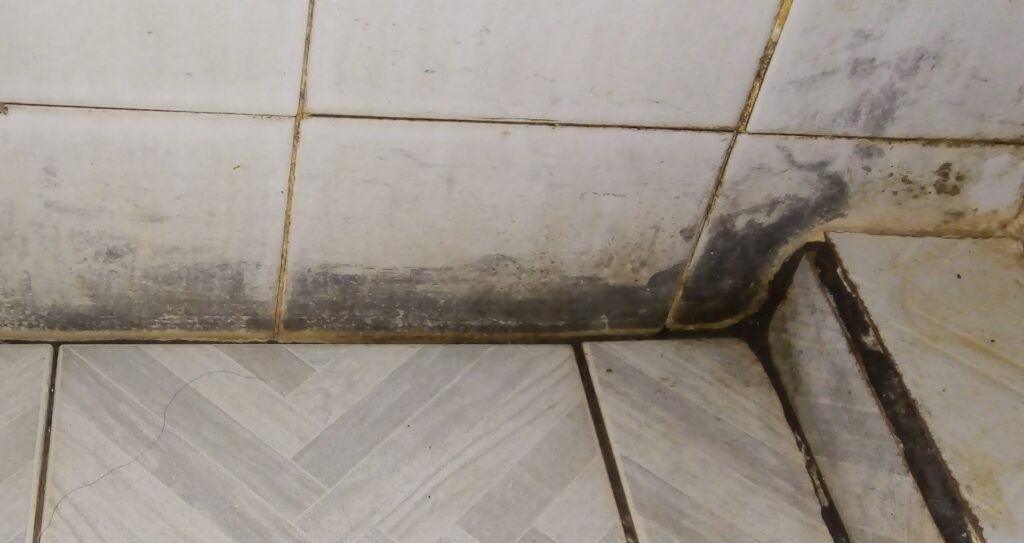In addition to the heat, summer brings humidity for me. Where I live, there are days where I can barely get up in the morning from the weight of water in the air. The mugginess brings mold, mosquitos, and more. That means tons of damage to my home, belongings, and my health!
So, what to do? Dehumidify!
Through trial and error as well as a lot of research, I’ve come up with some good practices for how to best dehumidify your space.
When choosing the right dehumidifier, you are going to have to consider the size of your room, house, and what exactly you want your dehumidifier to do for you.
How Many Dehumidifiers Do I Need for My House?
This right here is the million-dollar question for most people. Literally – you don’t want to waste a ton of money just to dehumidify your house.
You need to be careful though, because if you buy too small of a unit, you will not feel the effects of it at all. Vice versa, if you buy too big of a unit for your home, while you feel the effects of your unit, you will be driving up your energy bill much more than you really have to.
The first thing you need to know is how large your house is.
The larger the house, the more dehumidifiers you are going to need. The general rule of thumb for dehumidifiers is that you are going to want one in every space of your house.
That means if you buy one dehumidifier for your living area, do not expect to feel its effects when you walk upstairs into your bedroom. Unless your bedroom is right next to your living area and you buy a decently sized unit, chances are, you are going to feel more damp air when you are in your bedroom than when you are out in your living area.
Should I Get A Whole House Dehumidifier?
There are such things as a whole house dehumidifier. Now while that does sound like a great idea, the thing you have to look out for with that unit is the cost it will take to run it.
Depending on how large your home is, the installation of a whole home dehumidifier can cost anywhere from hundreds to thousands of dollars and that is even before you start using it!
The larger your house is, the more power it will take to dehumidify your entire home, which all just leads to an exponentially larger energy bill.
So, while having one unit to run your entire unit sounds much more convenient, it will be your bank account shouldering that heavy burden.
If you are building a new home, though, it would be a good idea to install this in the process. It will be easier to do it now than later down the road.
Do I Need A Dehumidifier in Every Room?
Yes, you do need a dehumidifier in every room. But there can be some exceptions to the rule.
For example, if you have two upstairs bedrooms that are connected through a bathroom, all you need to do in that situation is put a dehumidifier in the bathroom that is large enough to service both bedrooms and the bathroom.
The same situation can be applied to rooms without separating walls in the rest of your house as well. If your kitchen and dining room have no wall in between them, you should be able to buy a dehumidifier based on the combined square footage of both rooms, place it somewhere near the middle, and feel the effects of it in both living spaces.
If you have rooms that are not connected, you should get a dehumidifier for each of them.
Once you know how many rooms and room-combos that you want to dehumidify, measure them to determine what size of humidifier you need for each one.
What Size of Dehumidifier Do I Need?
Dehumidifiers measure their capacities in pints. These pints relate to the size of the space you want to dehumidify. Any unit with a higher pint level is much more efficient at getting rid of any moisture in the room and the amount of energy used.
If you are unable to get an exact measurement on the size of the area you want the dehumidifier to reach, go for a bigger unit rather than smaller. That way you know your room is being dehumidified properly.
Rooms up to 500 Square Feet
If the room you are looking to place a dehumidifier in is up to 500 square feet or less, the amount of pints you should look for is 40 pints or fewer.
If the room is occasionally damp or musty, or the room has visible condensation, if you stick a dehumidifier in there that has anywhere up to 40 pints, you should start to notice a huge difference in your room.
Remember, if you think your room could be bigger than this size, you can always use a few more pints just to be sure.
Rooms Between 500 and 1000 Square Feet
If you have a room that is around the 1000 square feet range, the first thing you need to assess is just how damp your room is. After you do that, you will be able to make a decision on the right sized dehumidifier.
If your 1000 square foot room is damp or musty, you only need a dehumidifier with a capacity of 40 pints or less.
But if your room is occasionally or always wet, with visible condensation, go with a dehumidifier that is anywhere around 41 to 59 pints.
Rooms up to 1500 Square Feet
For a 1500 square foot room, if you find it only gets damp occasionally, you can still stick with a unit that is 40 pints or less.
If your room is always damp or condensation is occasionally noticeable, any unit that has around 41 to 59 pints is probably your best bet because you will want to take care of that issue.
If your room is always wet and condensation is always visible, an even bigger unit is definitely the way to go. Look for any dehumidifiers that have around 60 pints or more.
Larger Spaces up to 2000 Square Feet
The moisture level of your room is going to determine how large of a dehumidifier you are going to need to place in it. If you have a 2000 square foot room and you notice that it gets damp and musty occasionally or all the time, you are going to want a dehumidifier that is around 41 to 59 pints.
Anything less and you will probably still notice the dampness and muckiness to some degree. If your room is much worse than that, and it is either wet with visible condensation sometimes or all the time, you will want to go with the bigger units that are around 60 pints and above.
Rooms up to 2500 Square Feet
If you have a room this big, you will want to make sure your dehumidifier can get the job done. If your room is occasionally damp and musty, you will want a unit that is around 41-59 pints.
If you notice any moisture or dampness that is heavier or happens more frequently, you should get a larger unit that requires at least 60 pints or more. Again, the larger the room, the more area you will need your dehumidifier to cover.
Remember, it is completely okay to get a unit that is too big for your room! Rather get one that is too big than one that is not big enough.
Also, if you are looking to dehumidify a large basement that is finished or unfinished, know that they make special kinds of dehumidifiers for basements.
Where is the Best Place to Put a Dehumidifier in My House?
The first thing you should do is make sure your dehumidifier is located near the source of all the moisture. This way, when you turn it on, it will be working on that space directly.
The most ideal placement for your dehumidifier is in the center of the humid room with nothing obstructing its airflow. This will allow your dehumidifier to work at its highest capacity.
If you are using it for a smaller sized area, the placement does not matter as much but you will still not want anything hindering its air flow.
If you are using your dehumidifier in a basement, it would be wise to keep it near an outlet. That way it can work at full power since basements can get very damp.
Do I Need a Dehumidifier?
The biggest sign that you need a dehumidifier in a room is if you are having to deal with constant allergy problems (and that it’s not because of dry air). Your dehumidifier will help lower humidity which will make it harder for dust, mold, and mildew to thrive in your room. If you are able to lower those contaminants in your home, you will start to realize your allergies becoming less and less frequent.
Some signs to look out for aside from allergies are things like water stains on walls or ceilings of your home.
If you do not have good ventilation, you will notice that those rooms are much more humid than others. One room where this is especially likely is the bathroom.
You should also look at your windows. If you see condensation, that is another sign that you need a dehumidifier for that room.
Other signs you will want to keep your eyes out for are things like black spots on your wall, as these are mold spores that grow in places with high humidity.

If you live in an apartment complex, it is smart to get a dehumidifier because mold and mildew particles can travel through the air vents and find their way into your apartment. It does not matter if you keep your apartment as clean as you possibly can; if someone in an apartment close to yours has a bunch of mold, those particles can still find their way into your place.
In Conclusion
Be on the lookout for signs that your room needs a dehumidifier. Once you decide it is time to get a dehumidifier, know where you want to place the unit and measure how big that area is. Use my guide above to determine the size you need.
Based on the number of rooms in your home and whether they are connected or not, you can count how many dehumidifiers you need.
Keep your dehumidifiers clean so they run smoothly. Once I started successfully dehumidifying my home became really comfortable. Plus, no more nights of your allergies keeping you up at night. A good dehumidifier can make sure that the air you are breathing is safe and healthy.
